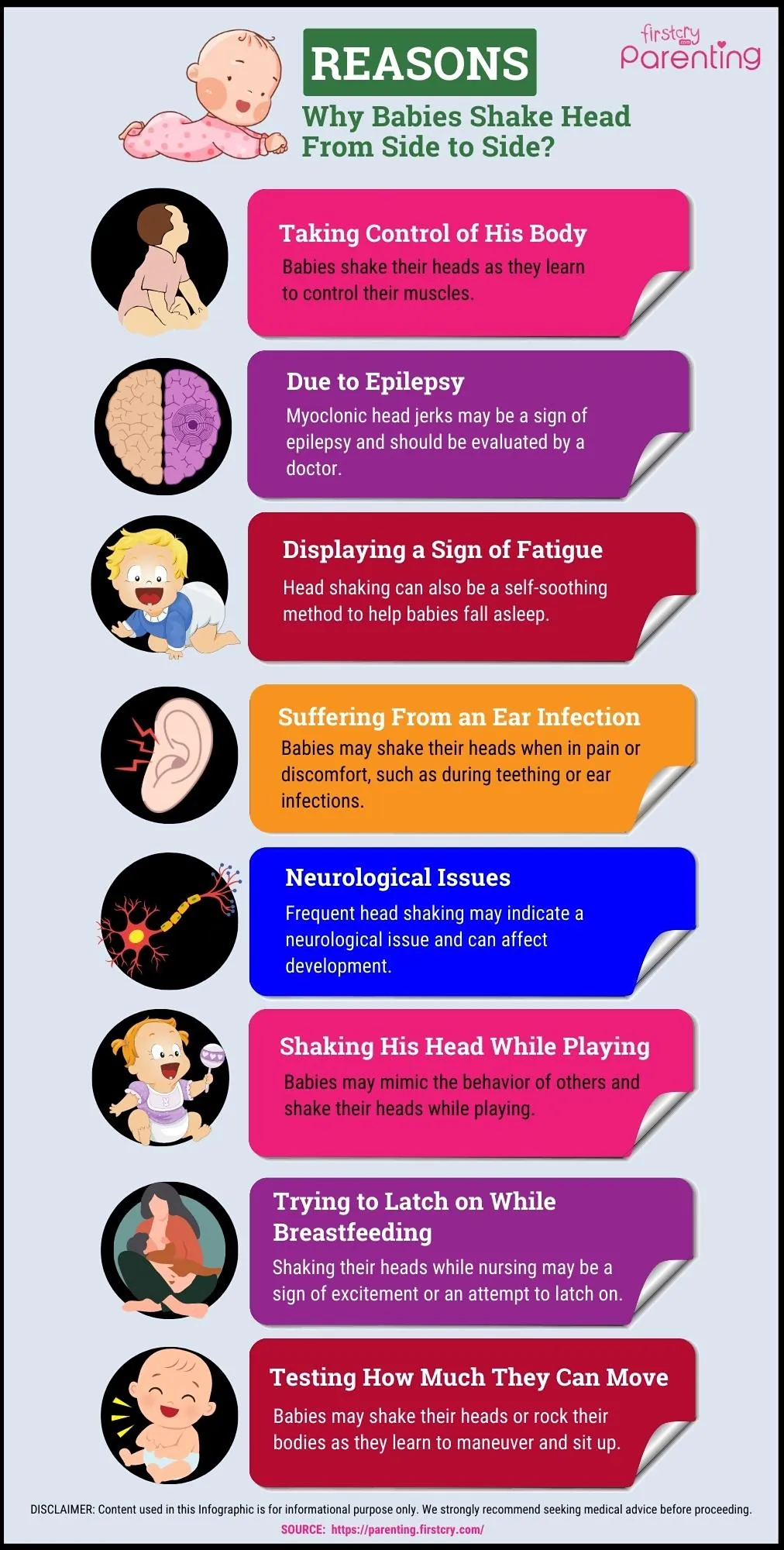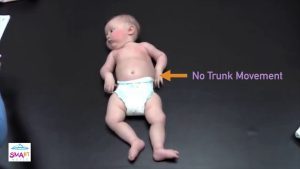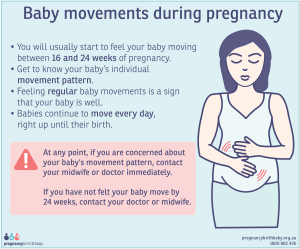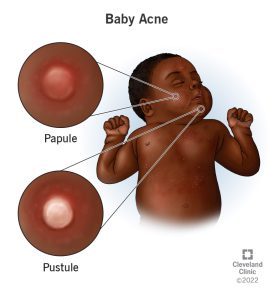If your baby is moving their head rapidly from side to side, it may be a sign of typical developmental behavior or a possible neurological issue. Babies engage in various movements as they explore their environment and develop physical coordination.
Rapid head movements can be a normal part of this process. However, it’s essential to observe other signs and consult a pediatrician if you have any concerns. Seeking professional advice can help ensure your baby’s well-being and provide peace of mind for you as a parent.
Understanding the reasons behind your baby’s movements and receiving appropriate guidance can help support their healthy development.
What Causes The Head Movements?
What Causes the Head Movements?
Developmental Milestones, moving head side to side
Babies move their heads side to side rapidly to explore their environment and build muscle strength.
Sensory Stimulation
Babies’ head movements are a way of engaging with the world around them and stimulating their senses.
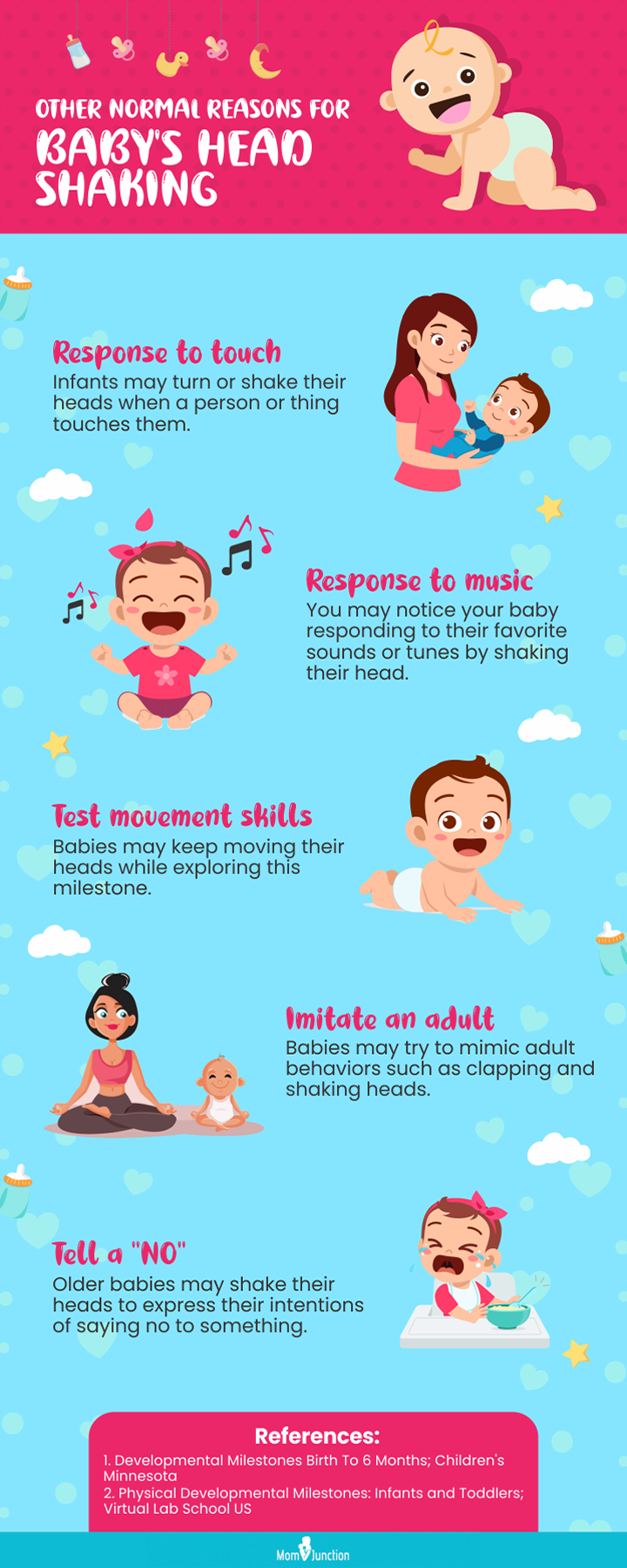
Interpreting The Speed
When you notice your baby moving their head rapidly from side to side, it’s natural to feel concerned and curious about what it could mean. The speed at which your baby moves their head can convey important messages about their development and well-being. Understanding the nuances of this movement can help you determine whether it’s a normal variation or if there might be potential concerns that need to be addressed.
Normal Variations
Babies engage in various movements as they explore and interact with their surroundings. Rapid side-to-side head movement can be a normal part of this developmental process, especially during the first few months of life. It may indicate that your baby is simply discovering their range of motion and testing their physical abilities. Additionally, such movements can occur during periods of excitement or when they are trying to communicate their needs and emotions.
Potential Concerns
While some head movements are normal, others may raise red flags for potential concerns. If your baby repeatedly and consistently moves their head rapidly from side to side, it may be worth consulting with a pediatrician to rule out any underlying issues. This can include concerns related to neurological development, vision problems, or even ear infections. Keeping a close eye on any patterns and discussing them with a healthcare professional can provide insights and peace of mind.
Types Of Side-to-side Movements
When it comes to observing your baby’s movements, deciphering their meaning can sometimes feel like cracking a code. One movement that often catches parents off guard is when their baby starts rapidly moving their head from side to side. But what do these side-to-side movements indicate? Let’s take a closer look at the types of side-to-side movements and what they might mean for your little one.
Jerky Movements
If you notice your baby’s head rapidly jerking from side to side, it is quite normal and typically nothing to worry about. These jerky movements are often seen in newborns and can be a result of their developing nervous system. Babies might engage in this movement when trying to self-soothe or when they are overstimulated. It is their way of finding comfort or releasing pent-up energy. While these jerky movements can seem odd, they are usually part of a healthy developmental stage and tend to subside as your baby grows.
Smooth Rolling Motions
On the other hand, if your baby’s head moves smoothly from side to side in a rolling motion, it may indicate a different set of meanings. This side-to-side rolling motion is often associated with a baby’s attempt to explore their surroundings. As their vision develops, babies engage in this movement to take in their environment. Rolling their head from side to side helps them spot objects, people, or movement that catches their attention. It is their way of actively engaging with their surroundings and shows a healthy curiosity in their early stages of development.
In addition to exploring, smooth rolling motions can also serve as an early precursor to baby’s attempts at turning their head. As they strengthen their neck muscles, babies may start rolling their heads side to side as a precursor to eventually rolling onto their side or even turning over completely. This rolling motion helps them build the necessary muscle strength and coordination for future milestones like sitting up and crawling.
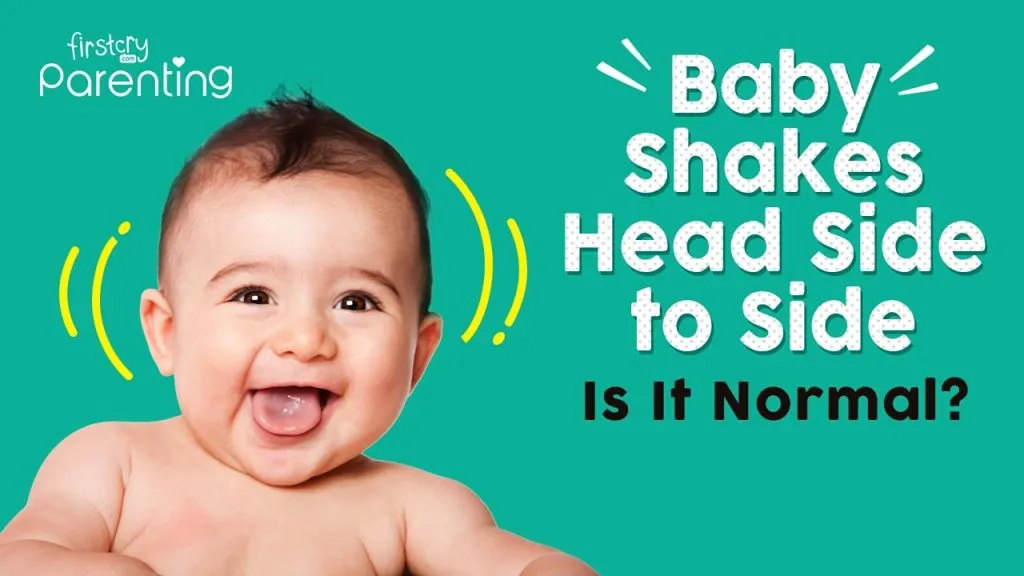
Engaging With The Baby’s Movements
Engaging with your baby’s movements is an essential part of their development and bonding experience. As they grow and explore their surroundings, their movements become more deliberate and purposeful. One common movement you may observe in your baby is when they rapidly move their head from side to side. This blog post will discuss how you can engage with your baby during this movement, while ensuring their safety and encouraging playful interactions.
Encouraging Play
Playing with your baby is not only enjoyable and stimulating for them, but it also helps promote their cognitive and sensory development. When you notice your baby moving their head from side to side rapidly, you can use this opportunity to engage in playful interactions. Here are a few ways you can encourage play during this movement:
- Eye contact: Get down to your baby’s eye level and make eye contact. This helps them feel connected and engaged.
- Facial expressions: Make exaggerated facial expressions like smiling, sticking out your tongue, or raising your eyebrows. Your baby will be fascinated by your expressions and may try to imitate them.
- Talking and singing: Talk or sing to your baby in a soothing and playful voice. This not only captures their attention but also helps develop their language and communication skills.
- Interactive toys: Introduce age-appropriate toys that can be easily grasped or manipulated by your baby. This will provide them with sensory stimulation and encourage them to explore and play.
Ensuring Safety
While engaging with your baby’s movements, it is crucial to prioritize their safety. Here are some safety measures to keep in mind:
- Safe environment: Ensure that your baby is in a safe and secure space free from hazards, such as sharp objects or loose cords.
- Supervision: Always supervise your baby during playtime to prevent any accidents or injuries.
- Gentle movements: When interacting with your baby, be gentle and avoid any sudden or jerky movements that could potentially harm them.
- Age-appropriate toys: Choose toys that are appropriate for your baby’s age and developmental stage to prevent choking hazards or other risks.
By following these safety guidelines, you can provide a secure and nurturing environment for your baby to explore and engage with their movements.
The Role Of Reflexes
An important aspect of a baby’s early development is the role played by reflexes. These involuntary movements and reactions are critical for their overall growth and well-being. In this article, we will explore two specific reflexes – the Moro reflex and the Rooting reflex – and understand their significance in relation to a baby moving their head rapidly from side to side. Let’s dive in!
Moro Reflex
The Moro reflex, also known as the startle reflex, is one of the earliest reflexes to emerge in newborns. This instinctual response occurs when a baby experiences a sudden change in their environment or feels a sense of falling.
During this reflex, the baby will initially extend their arms and legs outward and then bring them back toward their body in a hugging motion. This reflex plays a crucial role in their survival instincts, as it prepares them to respond to potential threats in their surroundings.
Rooting Reflex
The Rooting reflex is another vital reflex that aids in a baby’s survival and feeding. This reflex is triggered when something gently touches the baby’s cheek or mouth region. As a response, the baby turns their head toward the stimulus and opens their mouth in preparation for nursing or feeding.
When a baby moves their head rapidly from side to side, it could be an expression of their Rooting reflex in action. By exploring their environment in this manner, babies are instinctively seeking out sources of nourishment and contact with their caregivers.
It is important to note that these reflexes are usually most active during the early months of a baby’s life and tend to diminish as they grow and develop greater voluntary control over their movements.
Understanding the role of reflexes in a baby’s development allows parents and caregivers to better comprehend their needs and respond appropriately. By providing a nurturing and supportive environment, we can help facilitate the natural progression of these reflexes and positively contribute to the overall growth and well-being of our little ones.
Impact Of External Factors
When a baby is moving their head rapidly from side to side, it could be a response to external factors such as overstimulation, hunger, or discomfort. It’s important for parents to observe and address these factors to ensure the baby’s comfort and well-being.
Noise Levels
Loud noises can startle a moving baby, causing the head to rapidly go side to side. Ensure the surroundings are calm and quiet.
Visual Stimuli
Bright lights or fast-moving objects can trigger a baby to quickly move its head side to side. Opt for gentle, soothing visuals instead.
When To Seek Professional Advice
If your baby is moving their head side to side rapidly, there are situations when seeking professional advice is crucial.
Persistent Movements
If your baby’s head movements are persistent and continuous, it may indicate an underlying issue that needs professional evaluation.
Developmental Delays
Developmental delays in conjunction with rapid head movements could signify a need for professional guidance to ensure proper development.

Celebrating The Joy Of Movement
Babies are often seen moving their heads rapidly from side to side, and this delightful display of movement is an important part of their growth and development. In this blog post, we celebrate the joy of movement in babies and explore the many benefits it brings.
Bonding Opportunities
Rapid head movements of babies create bonding opportunities with parents and caregivers. Eye contact and smiles can follow the baby’s movement, reinforcing the bond between the baby and the person engaging with them.
Growth And Learning
The repetitive side-to-side head movements are a natural part of the development process. By engaging in this movement, babies are strengthening their neck muscles, which is a crucial step in their growth and learning to control their bodies.
Why Do Babies Move Head Side To Side Fast?
Babies move their heads side to side fast as a way to explore their surroundings and develop motor skills. It’s a natural and normal behavior in infants.
Why Does My 8 Month Old Shake His Head Vigorously?
Your 8-month-old may shake his head vigorously as a way to express excitement or playfulness. It is a normal behavior at this age and typically nothing to worry about.
What Is Involuntary Head Bobbing In Infants?
Involuntary head bobbing in infants is a common motor skill development stage, often seen when they are learning to control their neck muscles. It is typically seen when they are tired or trying to focus due to immature motor control.
Do Babies Shake Head With Ear Infections?
Yes, babies may shake their head when they have ear infections. This could be due to discomfort or trying to alleviate pressure in the ears. It’s important to consult a healthcare professional for evaluation and proper treatment.
Conclusion
If you notice your baby constantly moving their head from side to side rapidly, it could be a sign of developmental milestones. It’s important to monitor their movements and communicate any concerns with a pediatrician. Understanding your baby’s motor development can help ensure their healthy growth and development.

